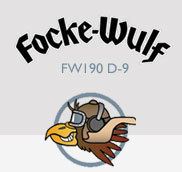Former type first AG, later GmbH Fate Merged Parent organizations Airbus, Airbus Group | Industry Aerospace Defunct 1964 Founded 24 October 1923 Ceased operations 1964 | |
 | ||
Products Commercial airliners, Military aircraft, helicopters Successor | ||
Focke wulf
Focke-Wulf Flugzeugbau AG ( [ˌfɔkəˈvʊlf]) was a German manufacturer of civil and military aircraft before and during World War II. Many of the company's successful fighter aircraft designs were slight modifications of the Focke-Wulf Fw 190. It is one of the predecessor companies of today's Airbus Group.
Contents
- Focke wulf
- Focke wulf vtol flat riser project animation available as an ebook from amazon kindle
- History
- Company designations
- RLM designations
- Built under license
- Plannedunfinished designs
- Projects
- References
Focke wulf vtol flat riser project animation available as an ebook from amazon kindle
History
The company was founded in Bremen on 24 October 1923 as Bremer Flugzeugbau AG by Prof. Henrich Focke, Georg Wulf and Dr. rer. pol. Werner Naumann. Almost immediately, they renamed the company Focke-Wulf Flugzeugbau AG (later Focke-Wulf Flugzeugbau GmbH).
Focke-Wulf merged, under government pressure, with Albatros-Flugzeugwerke of Berlin in 1931. The Albatros-Flugzeugwerke engineer and test pilot Kurt Tank became head of the technical department and started work on the Fw 44 Stieglitz (Goldfinch).
Dr Ludwig Roselius became Chairman in 1925 and handed over to his brother Friedrich in early 1933. In 1938 Roselius' HAG combine increased its shareholding to 46% and C. Lorenz AG secured 28%. The company was reconstituted as Focke-Wulf Flugzeugbau GmbH and no longer had to publish its accounts. A substantial capital injection occurred at this time.
In August 1933 Hans Holle and Rudolf Schubert were given power of attorney over the Berlin branch of Focke-Wulf. Then in October 1933, Focke-Wulf Flugzeugbau A.G. Albatros Berlin was officially registered with the Department of Trade.
Dr Roselius always remained the driving force of Focke-Wulf. He and his closest collaborator, Barbara Goette, often met with technical director Professor Kurt Tank. When Roselius died in May 1943, Heinrich Puvogel continued handling the financial affairs of Focke-Wulf as chief of Seehandel A.G.
Hanna Reitsch demonstrated the Focke-Wulf Fw 61, the first fully controllable helicopter (as opposed to autogyro), in Berlin in 1938. The four-engined Fw 200 airliner flew nonstop between Berlin and New York City on August 10, 1938, making the journey in 24 hours and 56 minutes. It was the first aircraft to fly that route without stopping. The return trip on August 13, 1938 took 19 hours and 47 minutes. These flights are commemorated with a plaque in the Böttcherstraße street of Bremen.
The Fw 190 Würger (Shrike/butcher-bird), designed from 1938 on, and produced in quantity from early 1941–1945, was a mainstay single-seat fighter for the Luftwaffe during World War II.
Repeated bombing of Bremen in World War II resulted in the mass-production plants being moved to eastern Germany and General Government, with AGO Flugzeugwerke of Oschersleben as a major subcontractor for the Fw 190. Those plants used many foreign and forced labourers, and from 1944 also prisoners of war. Focke-Wulf's 100-acre (0.40 km2) plant at Marienburg produced approximately half of all Fw 190s and was bombed by the Eighth Air Force on October 9, 1943.
Many Focke-Wulf workers, including Kurt Tank, worked at the Instituto Aerotécnico in Córdoba, Argentina between 1947 and 1955. Focke-Wulf began to make gliders in 1951, and in 1955, motorised planes. Focke-Wulf, Weserflug and Hamburger Flugzeugbau joined forces in 1961 to form the Entwicklungsring Nord (ERNO) to develop rockets.
ITT Corporation, which had acquired a 25% stake in the company prior to the war, won $27 million in compensation in the 1960s for the damage that was inflicted on its share of the Focke-Wulf plant by WWII Allied bombing. Colonel Sosthenes Behn, Ludwig Roselius and Barbara Goette outfoxed Hitler in 1936 when he tried to have Roselius removed as a major stakeholder from Focke-Wulf A.G. and reconstitution followed resulting in the privatized company Focke-Wulf Flugzeugbau GmbH. Focke-Wulf formally merged with Weserflug in 1964, becoming Vereinigte Flugtechnische Werke (VFW), which after several further mergers became the European Aeronautic Defence and Space Company N.V. (EADS). EADS was later reorganised as Airbus Group.
